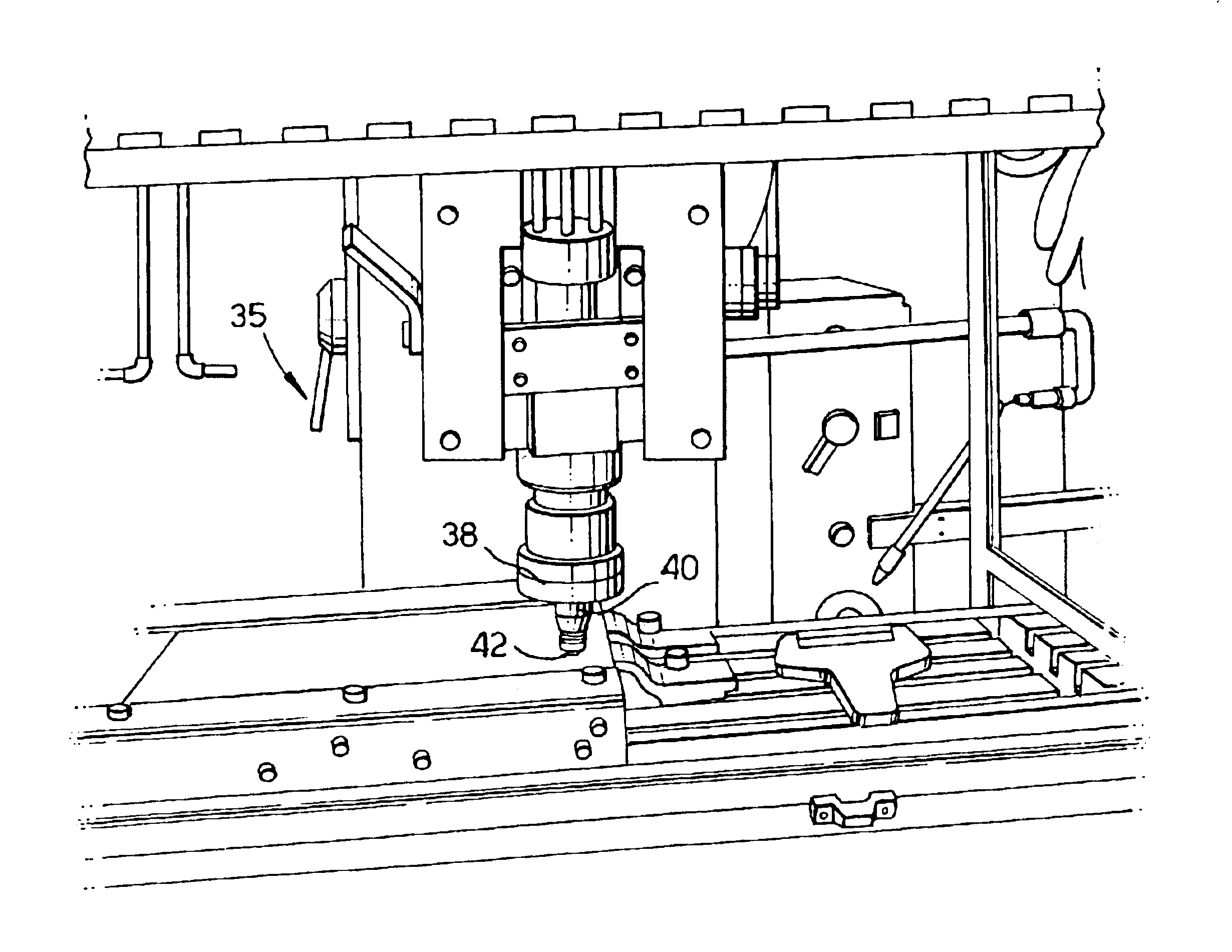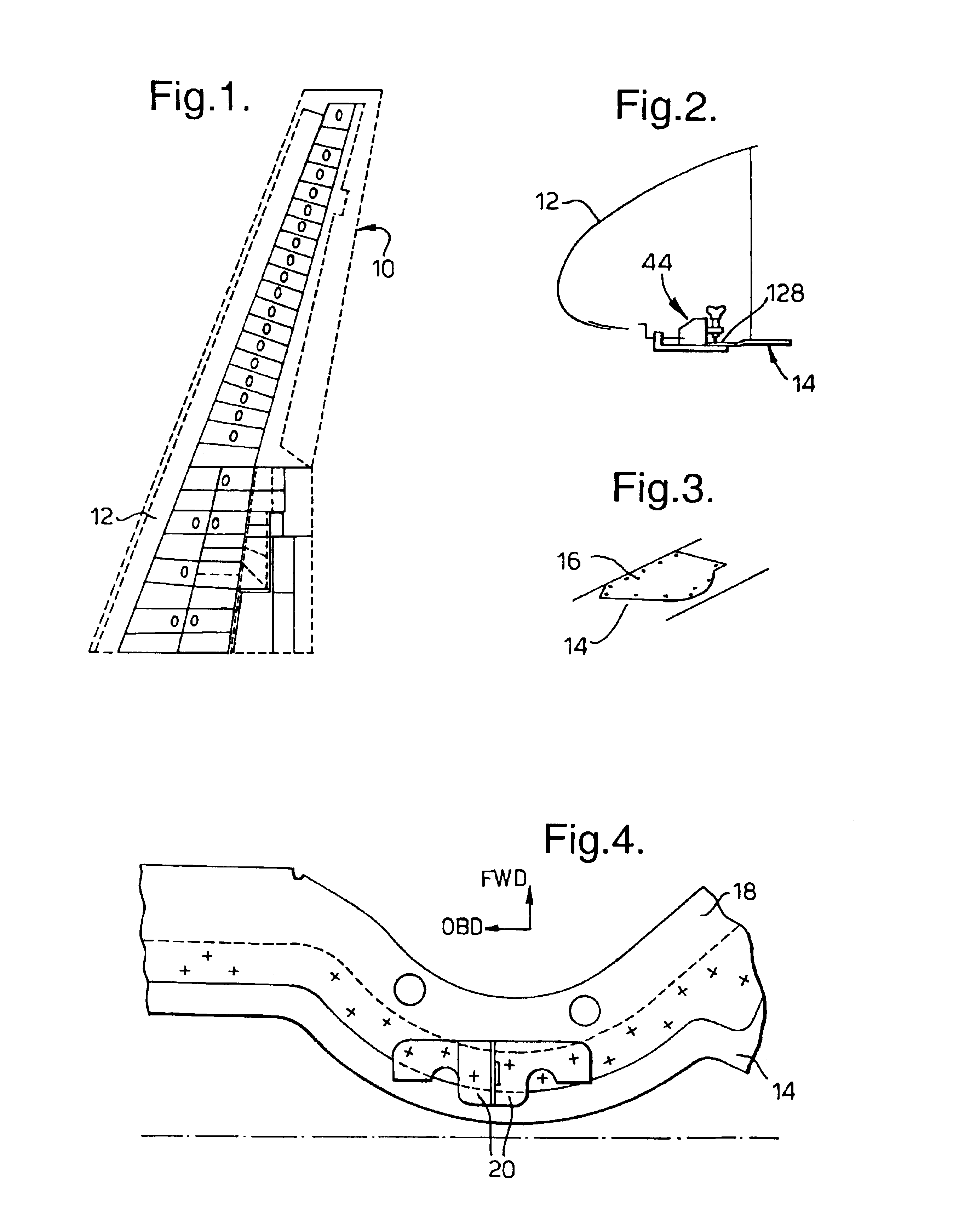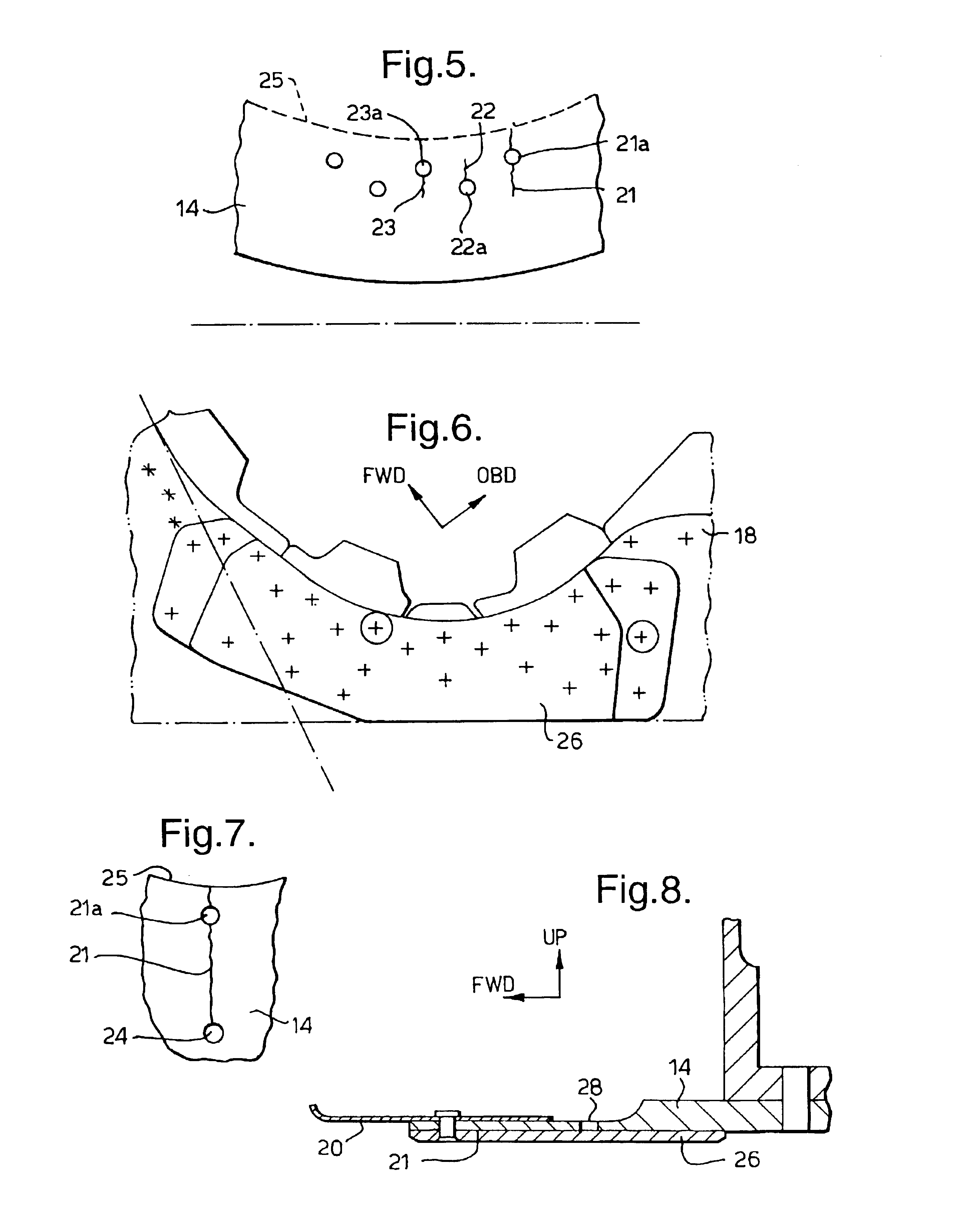Solid phase welding
a solid phase welding and welding technology, applied in the direction of soldering apparatus, manufacturing tools, auxillary welding devices, etc., can solve the problems of affecting the repair process, the repair area must be continuously monitored, and the leading edge of the aircraft wing to crack, etc., to achieve the effect of improving the repair process and improving the repair process
- Summary
- Abstract
- Description
- Claims
- Application Information
AI Technical Summary
Benefits of technology
Problems solved by technology
Method used
Image
Examples
Embodiment Construction
Referring to FIGS. 1, 2 and 3, a wing 10 has a leading edge 12 formed in known manner from light alloy sheet material. The leading edge 12 has a lower skin 14 as shown in FIGS. 2 and 3, the lower skin 14 being provided with an access panel 16 which is held in position by releasable fasteners of known kind.
Looking at FIG. 4, the lower skin 14 carries an edge member 18 and landing plates 20 used for the mounting of components (not shown). The edge member 18 and landing plates 20 are attached to the skin 14 by rivets in known manner.
When the aircraft is in service, it is not unusual for cracks to appear in the material forming the leading edge and FIG. 5 illustrates the way in which cracks 21, 22 and 23 have formed through three holes indicated at 21a, 22a and 23a.
FIGS. 6 and 7 serve to show the way in which the lower skin 14 can be repaired when cracks occur as shown in FIG. 5. The rivets holding the edge member 18 and landing plates 20 in position are drilled away so as to leave the ...
PUM
| Property | Measurement | Unit |
|---|---|---|
| thickness | aaaaa | aaaaa |
| weld length | aaaaa | aaaaa |
| depth | aaaaa | aaaaa |
Abstract
Description
Claims
Application Information
 Login to View More
Login to View More - R&D
- Intellectual Property
- Life Sciences
- Materials
- Tech Scout
- Unparalleled Data Quality
- Higher Quality Content
- 60% Fewer Hallucinations
Browse by: Latest US Patents, China's latest patents, Technical Efficacy Thesaurus, Application Domain, Technology Topic, Popular Technical Reports.
© 2025 PatSnap. All rights reserved.Legal|Privacy policy|Modern Slavery Act Transparency Statement|Sitemap|About US| Contact US: help@patsnap.com



